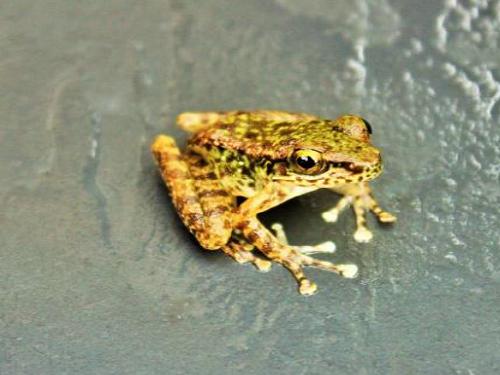Dorji Norbu
The study will assess the frog diversity and its habitat use in Upper Drangme Chhu River, which extends over three districts namely Trashiyangtse, Trashigang and Mongar. The conservation threats will also be evaluated.

Megophrys sp4.
Nearly 168 species of amphibians are believed to be extinct and at least 2,469 are known to be declining (Stuart, 2004). Currently, about 36 species of amphibians is reported from Bhutan (Wangyel, 2013), but the study determining its species diversity and the habitat use is scanty in much of its habitat range, especially on frogs.

Amolops sp.
The present project will therefore assess the frog diversity and its habitat use in Upper Drangme Chhu River, which extends over three districts, namely Trashiyangtse, Trashigang and Mongar. The conservation threats will also be assessed so that the result can act upon preparation of well management plan and bring the importance of frogs to public concern.
The reason for carrying out this project is because the over-exploitations of natural resources like stone and sand, and the anthropogenic activities happening at the river basin have created a massive threats to this unexplored species group. Furthermore, the on-going hydropower construction project in Drangme Chhu River is seen as a major conservation threats, contributing to habitat degradation and vanishing of such species unknowingly.
It is now a challenge to protect this species. The result of this project will try to ensure long term survival of frog species in its natural habitat along with other residential species, using the frog as a flagship species, so that the balance ecosystem in an area is maintained.